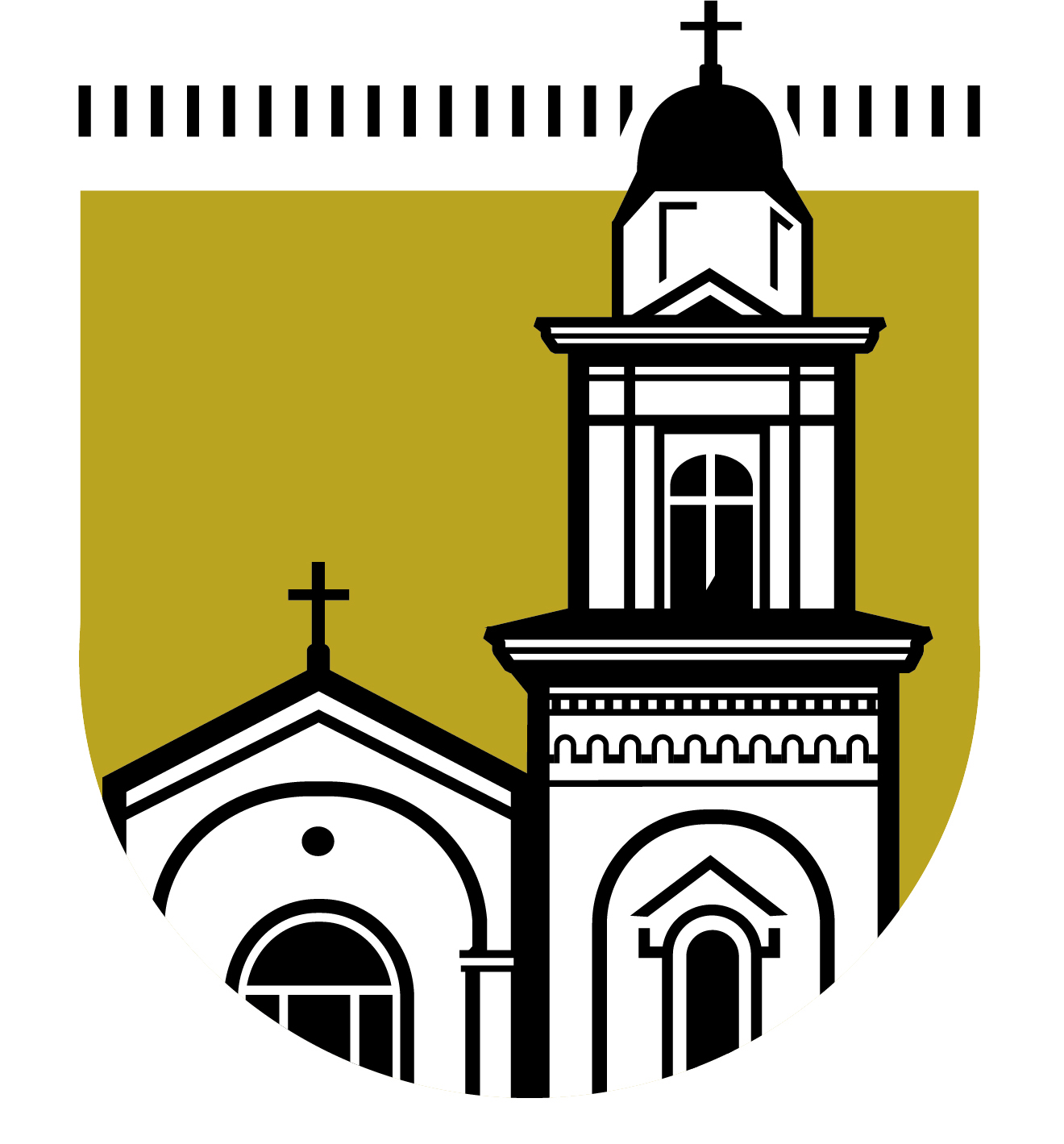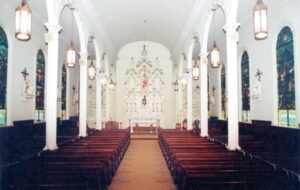In 1968, plans were made for the parish of St. Peter’s to build a new church rectory and parish hall. This new structure was to be built on the former site of the antebellum rectory. The new complex, completed in 1969, reflected the Spanish design of the historical church. The parish hall was named Francis V. Cusack Hall, in honor of Father Cusack who was responsible for the building of the new complex and served as both assistant pastor and pastor for a period spanning 17 years. At present a conservation effort continues to insure proper maintenance of the historical church. In July of 1990, restoration began on the towers to repair leaks and repaint the twin structures. The parish continues to provide for and strive towards the preservation of the history and beauty that St. Peter’s represents for all Catholics of Alabama. Although Father Pellicer was an excellent administrator and fund raiser, the priest was also noted for his dynamic spiritual direction of the parish. He ardently preached the doctrines of the Church, as well as having a compassionate heart, for all citizens of Montgomery, Pellicer’s ability for leadership would be particularly useful at St. Peter’s during the Civil War period. The primary issue in Congress was the slave question. Many time the issue divided Congress but compromise always seemed to prevail and preserve the Union. However, by the 1860 Presidential elections, the issue of slavery was the primary concern to all candidates. The favorite to win the election, Abraham Lincoln of Illinois, was opposed to allowing any more territories into the Union as slave states. This, of course, outraged Southern slave owners who at the time were expanding their agricultural economy into the new frontiers. It was decided by Southern politicians that if Lincoln was elected President, that the Southern States only alternative was secession from the Union. In Montgomery, 54% of the white male only voters cast ballots supporting the State Rights’ candidate, John C. Brenkenridge of Kentucky, while only 8% of the voters supported the national Democratic party nominee, Stephen A. Douglas. Lincoln was not even on the ballot in Montgomery, as was the case in most Southern States (Flynt p. 29). While the state of Alabama favored the State Rights’ candidate, the majority of the voters in the Union cast ballots for Lincoln. With this, the Southern states prepared for secession. In February, 1861, delegates from Alabama, South Carolina, Mississippi, Florida, Georgia and Louisiana, met at the Capitol in Montgomery to organize a government for the Confederate States of America. On February 18, 1861, Jefferson Davis of Mississippi was inaugurated on the steps of the Capitol. Montgomery would remain the Capitol of the Confederacy until delegates voted in May of 1861 to move the Capitol to Richmond, Virginia. Although there is not a record to verify that any parishioner at St. Peter’s was involved in any debate taking place just a few blocks from the church, it should be noted that most Catholics in the South and Montgomery agreed with the majority of Southern Whites on the issues of slavery and secession from the Union. A few parishioners from St. Peter’s even owned slaves. Father Pellicer kept a separate Baptismal record for slaves. The record was titled “Baptismal record for Colored People” (Baptismal records, St. Peter’s archives.). In his many entries into this record, he documents the names of the slaves baptized as well as the owners of the slaves. There were 168 slave baptisms recorded at St. Peter’s from December 15, 1861 through 1865 (Smith, p. 64).The Bishop of Mobile, John Quinlan, was present during the Battle of Shiloh (April 6-7, 1862). Over 24,000 Confederate and Union soldiers were lost in the battle. One Confederate solider killed in this horrific battle was buried by Father Pellicer. The record of burial records the following: “Eighteen hundred and sixty two, A.D., on the 16th of April, I, the undersigned pastor of Montgomery (St. Peter’s) interred Major Robert Armsted, age about 35 years, who was killed on the battlefield (Shiloh) on the 16th of April. Surprisingly, ‘A.D. Pellicer’ (record of burial, p. 25, St. Peter Archives) is the only entry into the burial record that indicates the burial of a soldier killed during the Civil War. In discussing the burial records, it should be pointed out that on April 6, 1863, the City Council of Montgomery sold to the Catholic community, a section of land to be used for Catholic burials (History of Oakwood Cemetery).

